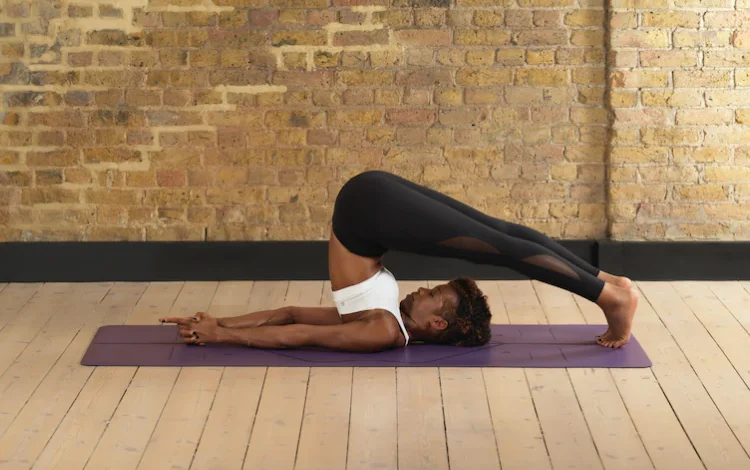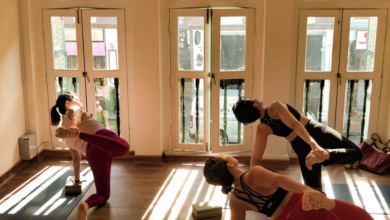Yoga: A Complete Guide to Practices, Benefits, and Holistic Well-Being

Introduction
Yoga is more than just a form of physical exercise—it is a holistic practice that harmonizes the body, mind, and spirit. Originating in ancient India over 5,000 years ago, yoga has evolved into various forms that cater to physical fitness, mental clarity, and spiritual growth. Its integration of posture, breath control, meditation, and mindfulness promotes overall wellness, stress management, and longevity. Understanding the different types of yoga, their benefits, and practical techniques is essential for anyone looking to improve health and achieve balance in life.
History and Philosophy of Yoga
Yoga is rooted in Indian philosophy and spiritual traditions. The earliest references appear in the Vedas, ancient texts that describe spiritual practices, rituals, and the pursuit of self-realization. Classical yoga, outlined in Patanjali’s Yoga Sutras, emphasizes eight limbs, including ethical disciplines, physical postures (asanas), breath control (pranayama), concentration, and meditation. Modern yoga incorporates these ancient principles while emphasizing physical fitness, mental relaxation, and stress reduction.
Types of Yoga
1. Hatha Yoga
Hatha yoga focuses on physical postures and breath control. It is ideal for beginners and emphasizes alignment, balance, and flexibility. Regular practice enhances posture, strengthens muscles, and reduces stress.
2. Vinyasa Yoga
Vinyasa yoga involves dynamic sequences where movements flow with the breath. It improves cardiovascular health, increases stamina, and promotes flexibility while providing a meditative experience.
3. Ashtanga Yoga
Ashtanga yoga is a rigorous, structured style involving a series of postures performed in a specific sequence. It builds strength, endurance, and mental focus.
4. Iyengar Yoga
Iyengar yoga emphasizes precise alignment and uses props such as blocks, straps, and blankets to support poses. It is particularly beneficial for individuals with physical limitations or injuries.
5. Bikram/Hot Yoga
Bikram yoga consists of 26 postures practiced in a heated room, designed to improve flexibility and detoxify the body through sweating.
6. Kundalini Yoga
Kundalini yoga focuses on awakening energy through breathwork, meditation, and chanting. It combines physical postures with spiritual and emotional exploration.
7. Restorative Yoga
Restorative yoga involves passive postures held for extended periods, often supported by props. It promotes deep relaxation, reduces stress, and aids in recovery from illness or fatigue.
Physical Benefits of Yoga
1. Improved Flexibility and Balance
Regular yoga practice increases flexibility, reduces stiffness, and enhances balance. Poses such as downward dog, tree pose, and warrior variations strengthen stabilizing muscles.
2. Enhanced Strength and Muscle Tone
Yoga postures engage multiple muscle groups, enhancing core strength and overall body tone. Styles like Vinyasa and Ashtanga are particularly effective for building functional strength.
3. Joint Health and Mobility
Yoga gently stretches and mobilizes joints, reducing the risk of injuries and improving range of motion. It is suitable for people with arthritis or limited mobility.
4. Cardiovascular and Respiratory Benefits
Dynamic yoga styles and pranayama exercises enhance cardiovascular endurance, improve lung capacity, and support overall heart health.
5. Weight Management
Yoga promotes mindful eating, increases metabolism, and supports sustainable weight management when combined with a balanced diet.
Mental and Emotional Benefits of Yoga
1. Stress Reduction
Yoga activates the parasympathetic nervous system, reducing cortisol levels and promoting relaxation. Meditation and breathing exercises calm the mind and alleviate anxiety.
2. Improved Focus and Concentration
Yoga practices enhance cognitive function, improve attention span, and promote clarity of thought through mindfulness and meditation techniques.
3. Emotional Resilience
Regular yoga fosters emotional balance, self-awareness, and the ability to cope with challenging situations. Practices such as Kundalini yoga address deep-seated emotional patterns.
4. Better Sleep Quality
Yoga supports relaxation, reduces insomnia, and regulates the sleep cycle through postures and breathwork designed to calm the nervous system.
Practical Tips for Starting a Yoga Practice
1. Choose the Right Style
Select a style that aligns with your goals—gentle for stress relief, dynamic for fitness, or spiritual for mindfulness.
2. Start Gradually
Begin with short sessions, focusing on foundational postures and breathing techniques. Gradually increase duration and complexity.
3. Use Proper Equipment
A non-slip yoga mat, comfortable clothing, and optional props such as blocks and straps improve safety and effectiveness.
4. Incorporate Breathwork (Pranayama)
Breathing techniques like alternate nostril breathing, diaphragmatic breathing, and ujjayi breath enhance oxygenation, focus, and relaxation.
5. Practice Mindfulness and Meditation
Yoga is incomplete without mental awareness. Integrate meditation or mindful reflection to deepen the benefits of physical practice.
6. Maintain Consistency
Consistency is more important than intensity. Daily or regular practice, even for 20–30 minutes, yields significant physical and mental benefits over time.
Integrating Yoga Into Daily Life
Morning Routine
Practicing yoga in the morning energizes the body, improves circulation, and sets a calm tone for the day.
Workplace Yoga
Short stretches, breathing exercises, and posture correction at work reduce tension, improve focus, and alleviate musculoskeletal strain.
Evening Routine
Gentle yoga or restorative practices before bedtime enhance relaxation and improve sleep quality.
Community and Classes
Joining classes or online sessions fosters accountability, proper guidance, and motivation while allowing interaction with a supportive community.
Health Considerations and Precautions
-
Consult a healthcare provider if you have chronic conditions, injuries, or are pregnant.
-
Avoid forcing poses or overstraining muscles.
-
Practice with proper alignment to prevent injuries.
-
Hydrate adequately, especially during heated or vigorous sessions.
FAQs on Yoga
1. Can beginners practice yoga effectively at home?
Yes. Beginners can start with guided online sessions, focusing on foundational poses and breathwork. Consistency and patience are key.
2. How often should I practice yoga for noticeable benefits?
Practicing 3–5 times a week for 30–60 minutes is effective. Even shorter daily sessions provide cumulative benefits over time.
3. Does yoga help with weight loss?
Yoga supports weight management by improving metabolism, promoting mindful eating, and incorporating physical activity through dynamic styles like Vinyasa or Ashtanga.
4. Can yoga reduce anxiety and depression?
Yes. Yoga decreases stress hormones, enhances mindfulness, and improves emotional resilience, contributing to reduced anxiety and depressive symptoms.
5. What is the difference between meditation and yoga?
Yoga combines physical postures, breathing techniques, and meditation, while meditation focuses primarily on mental awareness and mindfulness. Yoga enhances both physical and mental well-being.
6. Is yoga safe for older adults or people with limited mobility?
Yes. Styles like Hatha, Iyengar, and restorative yoga use gentle movements and props, making yoga accessible and safe for seniors or individuals with mobility limitations.
7. How soon will I see the benefits of yoga?
Physical improvements, such as flexibility and posture, may be noticeable within a few weeks, while mental and emotional benefits develop gradually with consistent practice.
Conclusion
Yoga is a timeless practice that promotes holistic health by integrating physical fitness, mental clarity, and spiritual awareness. Its diverse styles cater to various needs, from stress reduction to strength building and emotional well-being. Consistent practice, proper guidance, and mindful integration into daily life allow individuals to experience profound physical and mental transformation. Whether a beginner or an advanced practitioner, yoga offers sustainable tools for a balanced, healthy, and fulfilling life.
